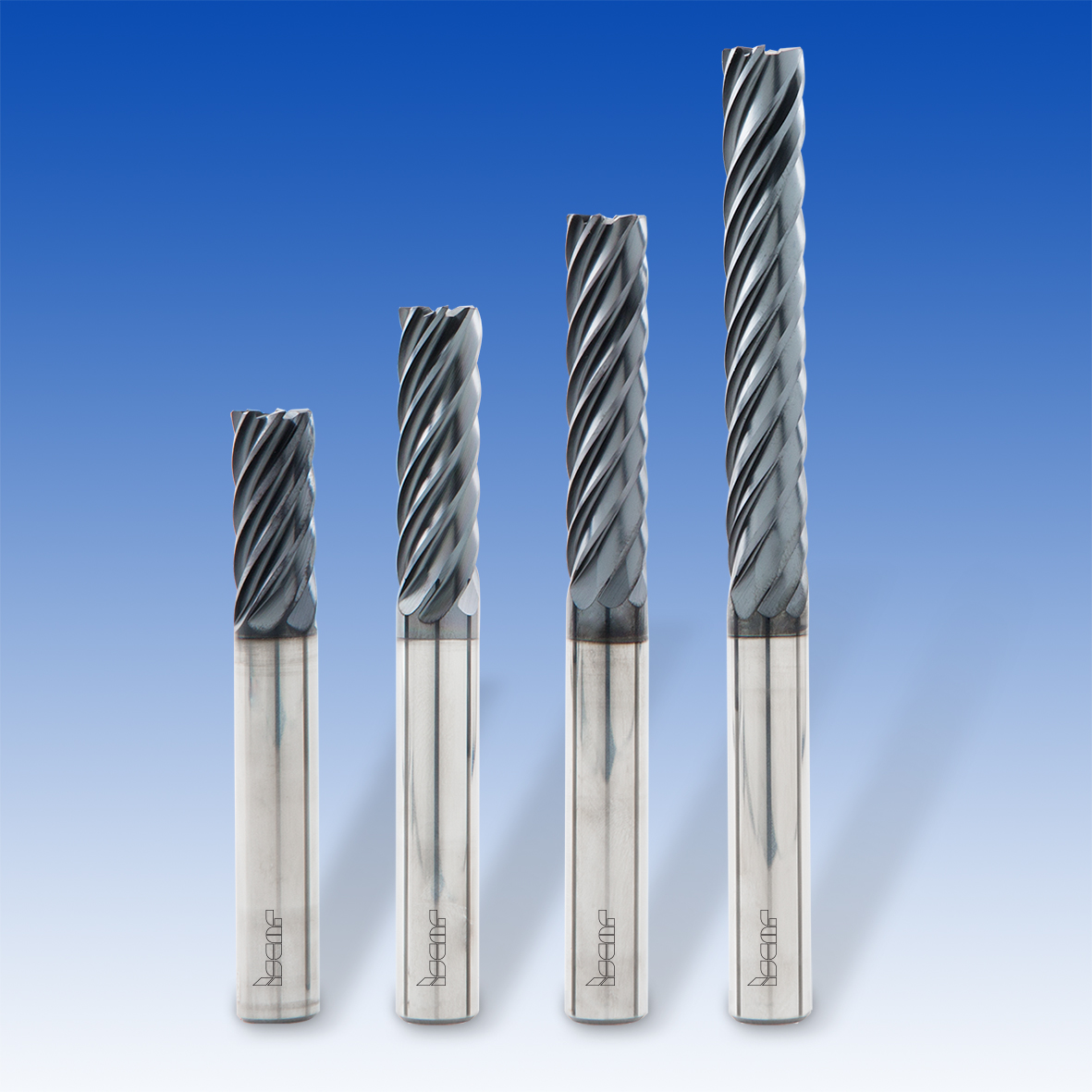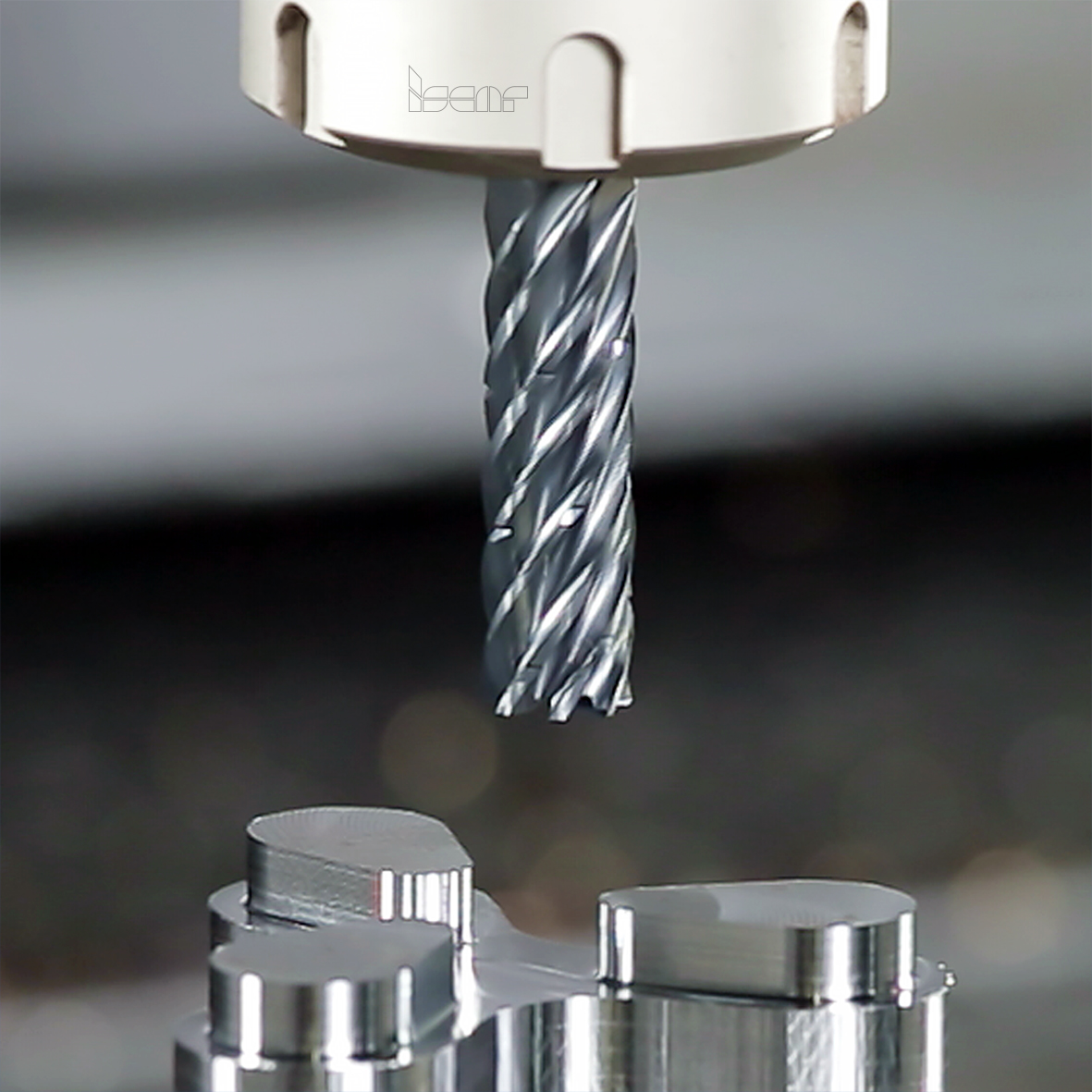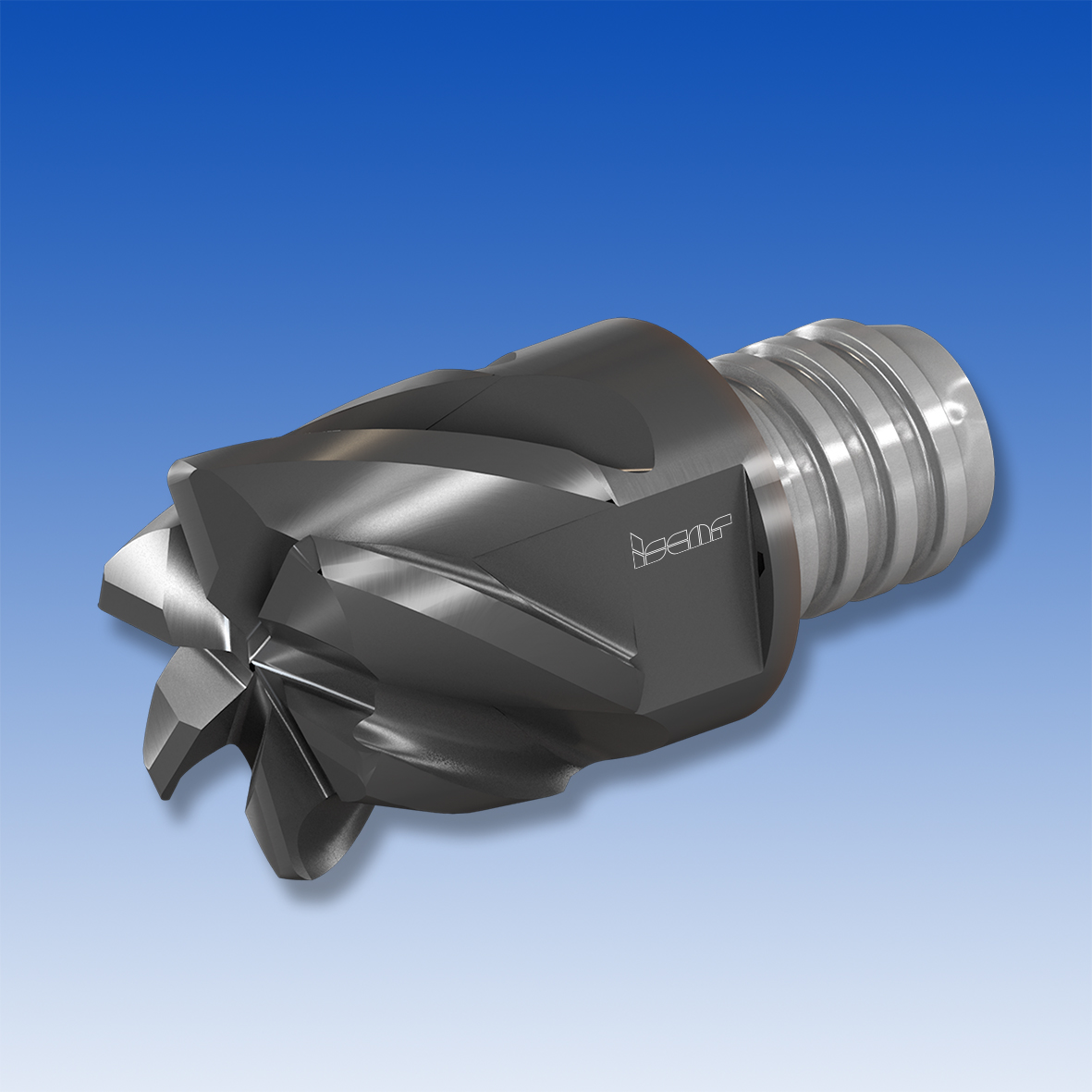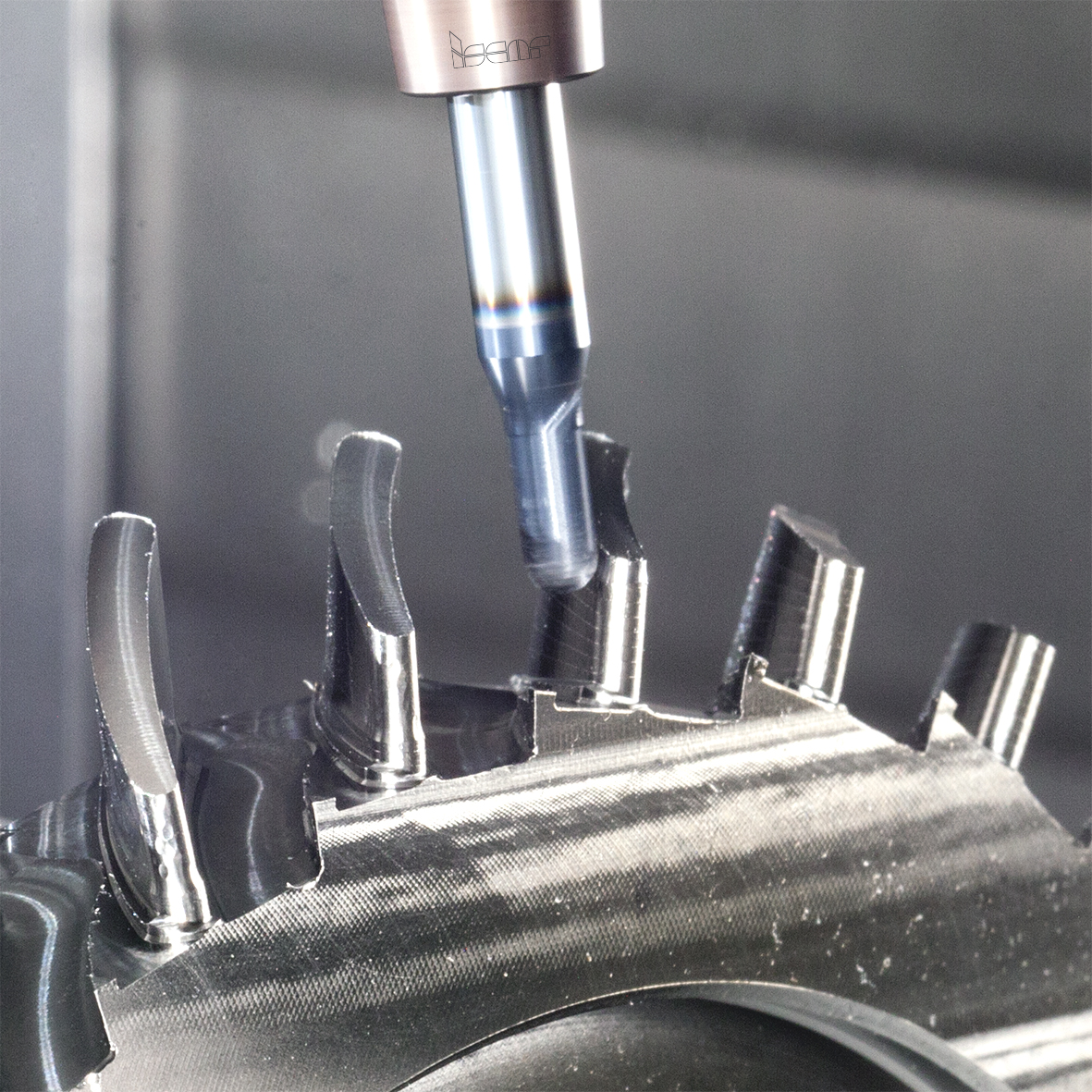Several decades ago, the introduction of machine tools with significantly increased rotary and linear velocities was the success to efficient high-speed machining (HSM) methods. Peel milling, also known as slicing, was one of these methods. The main principle of peel milling is its high depth of cut (usually, no more than five-tool diameters) when coupled with a low width of cut (typically, up to 0.2 of a tool diameter). This combination features significant advantages.
Decreasing the width of cut reduces heat load on a cutting edge and allows increasing cutting speed. In peel milling, the cutting speed can be higher when compared with traditional milling methods. The low width of cut significantly diminishes the radial component of a cutting force, which causes mill bending and vibrations. This ensures high operational stability and facilitates an increased depth of cut.
Radial chip thinning enables higher feeds to maintain the required accurate chip thickness. Therefore, milling with a small radial engagement and a substantial depth of cut performed at high cutting speeds and feed rates is a good cause for improving machining productivity. Moreover, such a machining method provides gradual, uniformly distributed wear along the whole cutting edge, thus increasing tool life.
Peel milling has proven to be productive in milling deep shoulders and wide edges. The slicing technique is successfully applied to rest milling – a machining process where a small diameter tool cuts various hard-to-reach areas, such as cavity corners.
The advance of computer numerical control (CNC) and computer-aided manufacturing (CAM) systems have generated further improvement: trochoidal milling with a complicated tool trajectory instead of a linear feed motion - suitable for peel milling. In mathematics, a trochoid is the curve, generated by the point of a circle rolling along a guide without sliding. In trochoidal milling, a cutting tool moves along a curve slicing thin and slim material layers. Commonly, the curve is a circular arc (semicircle) and the tool returns to the initial point by the arc chord and then repeats the path with a small stepover. In this case, the tool path looks like the letter "D". Milling along the curvilinear trajectory facilitates constant loading of a cutting edge and eliminates a sharp increase in load when entering the material.
In addition to the D-shaped path that is now considered "classical", today, most advanced machines with high-end control systems are much more complex. Trochoidal tool trajectories minimize non-cutting time and optimize machine unit motions.
Trochoidal milling is known to be very effective in machining deep slots, pockets, and cavities and is also a very promising method to mill hard and difficult-to-cut materials, in particular titanium and high-temperature superalloys (HTSA). In addition, trochoidal milling is extremely useful for improving performance when cutting in unstable conditions: non-rigid workpieces, thin-wall areas, poor work holding devices, etc. And even more so, uniform and considerably reduced tool loading makes trochoidal milling efficient and applicable in micromachining.
The major challenges in trochoidal milling are machine tool control and intelligent path programming. However, when solving these challenges, another important factor – the cutting tool – is often overlooked. Without the right tool, all efforts to design the trajectory and maintain uniform loading on the cutting edge reduces the expected results, which creates a challenge for tool manufacturers to produce an optimal tool to meet trochoidal milling requirements.
What are the features of a high-performance trochoidal milling cutter?
To begin with, the trochoidal milling cutter must be suitable for high-speed machining. This relates to appropriate accuracy parameters, balancing, safety when operated at considerable rotational speeds, and more. Milling with high depths of cut increases the tool’s overhang while the dynamical behavior of a cutter is crucial to ensure machining stability. When milling with a low width of cut, only one tooth engages the workpiece material at any given time. Optimizing a contact area along the tooth is an important factor for stable milling, and the cutter with the most favorable tool cutting edge inclination is a principal part for finding the best solution. The effective evacuation of the thin chips, which are generated when trochoidal milling, does not require a large chip gullet in the cutter.
Even a brief examination of the above shows that multi-flute solid carbide endmills (SCEM) or assembled mills carrying replaceable solid carbide heads comply with the requirements in the best way. Indeed, SCEM represents most trochoidal milling tools today.
Understandably, these endmills have their own design features that can be identified in the latest, innovative ISCAR product line. Several features characterize these products: a) different helix and variable angular tooth pitch that provide a vibration-resistant design to improve stability in HSM with high overhang, b) a specially shaped flute that results in an increased core diameter to improve dynamic strength, and c) enough space for chip gullet to ensure smooth chip flow. These products maintain high accuracy and deliver maximum metal removal rates when machining the main types of engineering materials. The diameter range of ISCAR’s solid carbide endmills (SCEM) for trochoidal milling is 2-25 mm.
CHATTERFREE EC-E7/H7-CF solid carbide endmills have 7 flutes and a variety of corner radii. They are available in a series of two, three, four and six cutting length-to-diameter ratios (Fig. 1). The endmills are produced from PVD coated ultra-fine carbide grade IC902.
The key distinctive feature of 7 flute endmills ECP-H7-CF (Fig. 2) is the chip-splitting geometry of a cutting edge. Introducing this geometry provides increased performance at high overhang and significantly improves chip evacuation in machining deep pockets and cavities. It is important to note that the chip-splitting edge ensures a satisfactory surface finish for most operational requirements.
Ti-TURBO 7- and 9-flute solid carbide endmills ECK-H7/9-CFR, which were designed especially for high-speed machining titanium alloys, have a cutting length of around two-tool diameters. Due to remarkable chatter dampening and an optimized-edge geometry, these solid carbide endmills show good results in trochoidal milling of various aircraft components, including machining curved slots in titanium bladed rotors (blisks).
If trochoidal milling is applied to shallow slots or corners of titanium parts, 6 flute MULTI-MASTER exchangeable heads that were recently introduced may be a more suitable solution (Fig. 3). The head design incorporated ISCAR's competence and experience in this field and has enabled a robust product for efficient machining hard-to-cut titanium grades such as Ti-10V-2Fe-3Al and Ti-5Al-5Mo-5V-3Cr.
This review would be incomplete without some notes about tool holders, which are essential to the success of trochoidal milling. Machining practice shows that the best results are reached when the milling cutters are mounted in hydraulic or heat shrink chucks (Fig. 4).
Figures for the article and their captions.
Fig. 1 – CHATTERFREE multi-flute solid carbide endmills produced in a series of different cutting length-to- diameter ratios.
Fig. 2 – A chip-splitting cutting edge design significantly improves chip evacuation and provides satisfactory surface finish.
Fig. 3 – ISCAR's MULTI-MASTER exchangeable head for trochoidal milling hard-to-cut titanium alloys.
Fig. 4 – Trochoidal rough milling of a blisk airfoil by a multi-flute solid carbide endmill, which is mounted in a heat shrink chuck.
 [Fig. 1]
[Fig. 1]
 [Fig. 2]
[Fig. 2]
 [Fig. 3]
[Fig. 3]
 [Fig. 3]
[Fig. 3]



